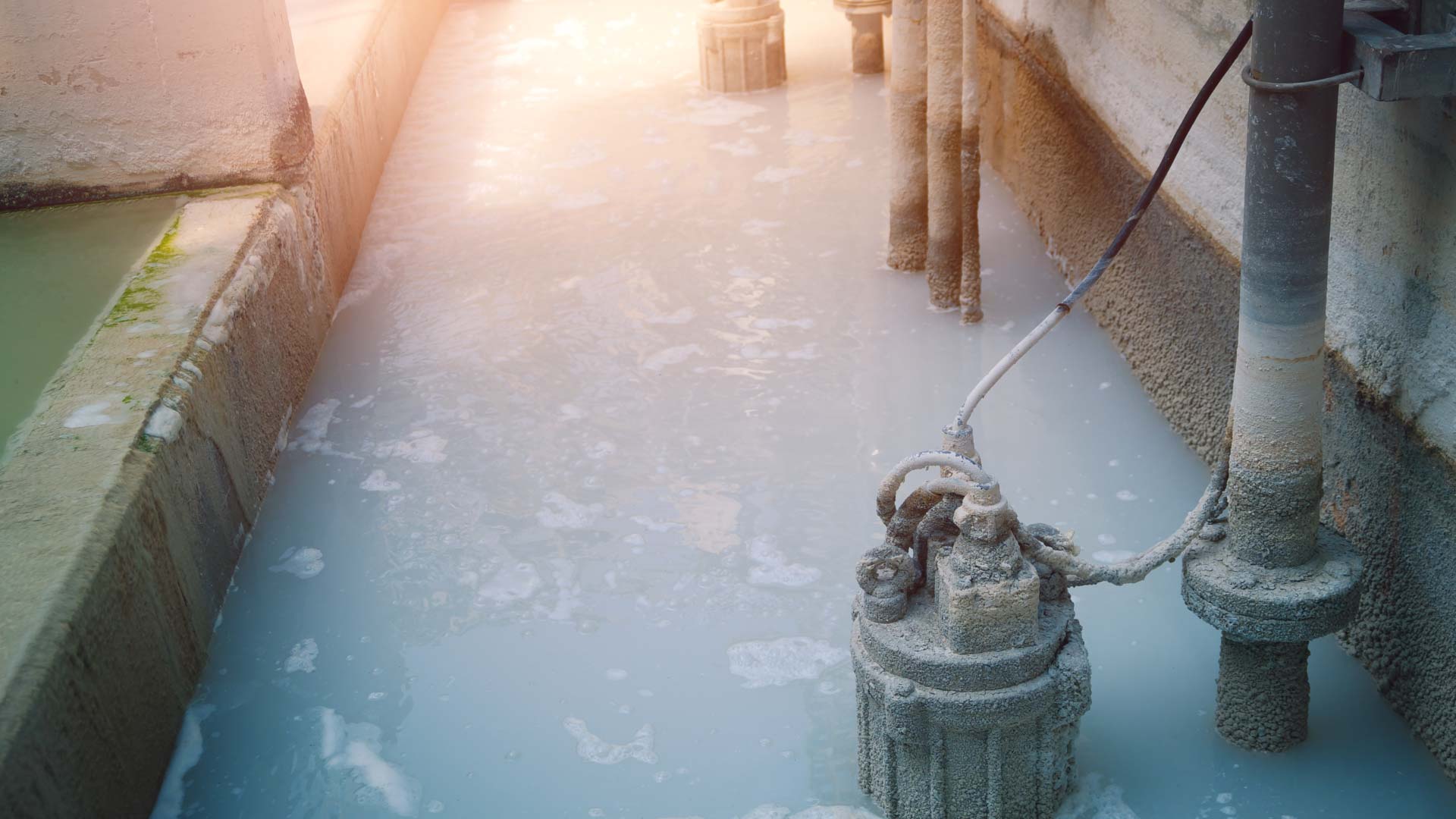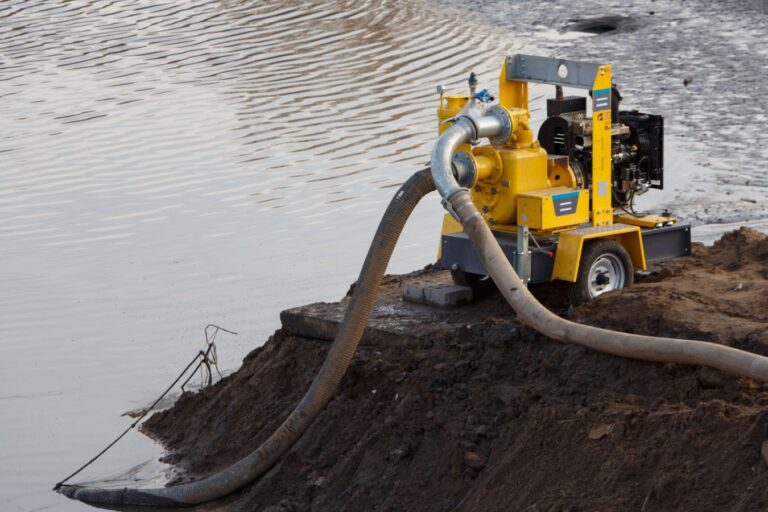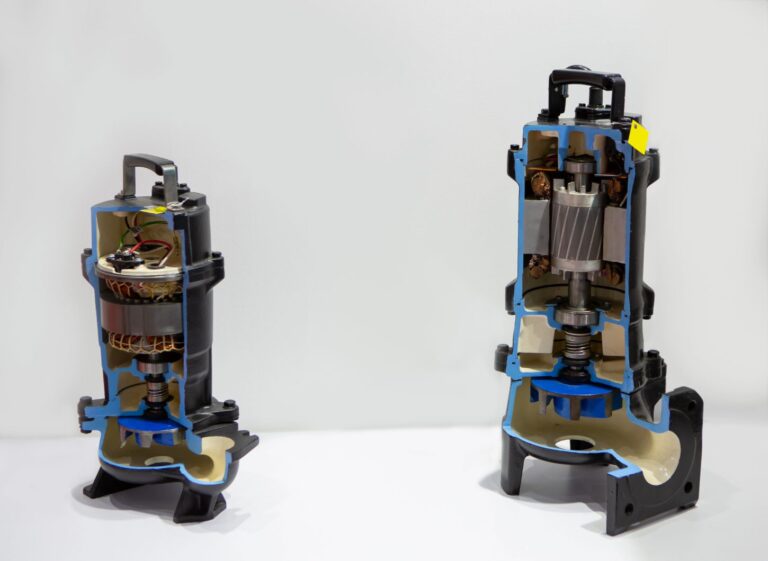Abrasive slurry pumps play a crucial role in industries that handle challenging materials, including mining, dredging, and construction. These pumps are designed to transport slurries, mixtures of solid particles and liquids,that are often abrasive and can cause significant wear and tear on pump components, particularly the impeller. The impeller, as the heart of the pump, is subjected to intense mechanical stress from the abrasive particles it processes. Understanding the key design factors of impellers, the challenges of wear and tear, and how slurry pump manufacturers optimize impeller technology is essential for maintaining efficient and durable slurry pumping operations. This article examines the pivotal role of impellers in abrasive slurry pumps and the design innovations that help mitigate wear and extend pump lifespan.
What is an Abrasive Slurry Pump?
An abrasive slurry pump is a specialized pump designed to transport abrasive slurries, which are mixtures of solid particles suspended in a liquid. These slurries are commonly encountered in industries such as mining, dredging, and construction, where the material being pumped contains coarse solids that can cause wear and tear on standard pump components.
The primary function of an abrasive slurry pump is to efficiently move these slurries from one location to another, typically in a pipeline system, without compromising performance or durability. Unlike standard water pumps, abrasive slurry pumps are designed to withstand the abrasive nature of the slurry, which can quickly degrade the pump’s internal components if not properly engineered. The pump’s impeller, casing, and other key parts are made from hard-wearing materials, such as high-chromium alloys or rubber linings, to withstand the abrasiveness of the solids within the slurry.
Industries That Commonly Use Abrasive Slurry Pumps
Abrasive slurry pumps are crucial in industries where materials with high abrasive content must be transported. Some of the key industries that rely on these pumps include:
- Mining: Mining operations frequently encounter slurry that contains coarse, abrasive particles, such as sand, gravel, and metal ores. Abrasive slurry pumps are used to transfer these materials, particularly in mineral processing, dewatering, and tailings handling.
- Dredging: In dredging, slurry pumps are essential for removing sediment from the waterbed. The slurry pumped in dredging applications often consists of sand, clay, and other abrasive materials found underwater, requiring pumps with high wear resistance.
- Construction: Construction sites involving concrete mixing, excavation, and other heavy-duty activities require abrasive slurry pumps to handle the transfer of slurries containing soil, sand, and cement mixtures.
- Environmental Management: Slurry pumps are also utilized in wastewater treatment plants and slurry dewatering systems, where abrasive materials, such as grit and sludge, need to be pumped efficiently.
Importance of Choosing the Right Slurry Pump for Abrasive Applications
Selecting the right slurry pump for abrasive applications is crucial for maximizing operational efficiency, minimizing downtime, and prolonging the equipment’s lifespan. Since abrasive slurries can cause significant wear on pump components, selecting the appropriate pump ensures that the pump can handle the specific slurry composition and flow requirements of the job.
Selecting the wrong slurry pump can lead to frequent maintenance, high operational costs, and equipment failure. For example, using a standard pump in abrasive applications can result in premature wear of the impeller and casing, leading to frequent replacements and costly repairs. Therefore, it is essential to select a pump specifically designed to handle abrasive materials, featuring reinforced impellers, heavy-duty casings, and corrosion-resistant coatings to minimize wear and enhance the overall efficiency of the pumping system.
When selecting a slurry pump, it’s crucial to consider the size and type of solid particles in the slurry, the pump’s anticipated operating conditions (such as temperature and pressure), and the required flow rates. Engaging with reputable slurry pump manufacturers is crucial for selecting the right equipment to ensure that the pump efficiently meets the demands of abrasive slurry applications.
The Role of the Impeller in Slurry Pumping
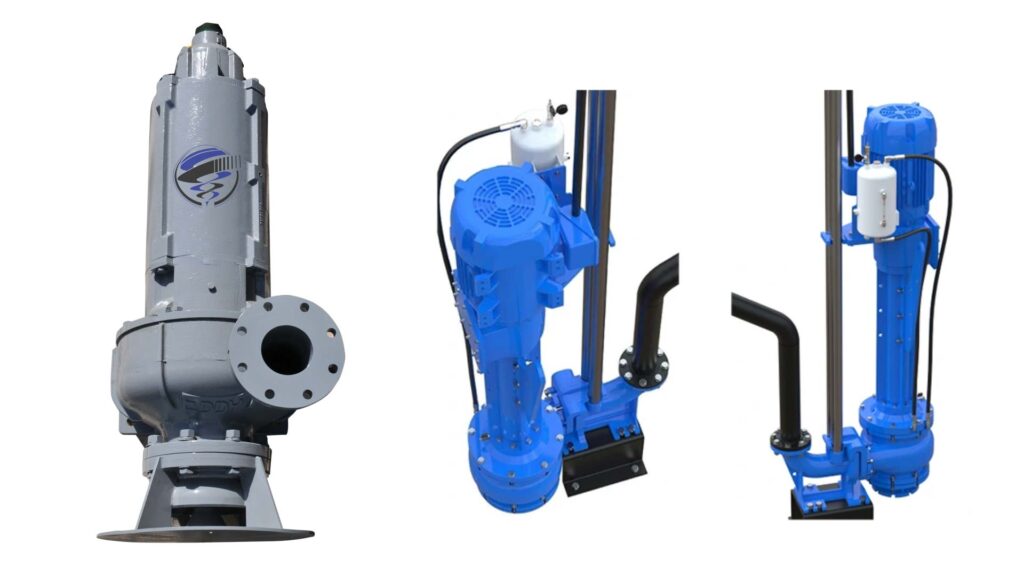
An impeller is a critical component of an abrasive slurry pump, responsible for transferring energy to the slurry, enabling it to move through the system. The impeller is typically a rotating disk with blades or vanes that generate centrifugal force, pushing the slurry from the suction side of the pump to the discharge side. As the impeller rotates, it accelerates the slurry, creating the necessary pressure and flow to move the material efficiently through the pump and pipeline system. In slurry pumping applications, the impeller’s design and material selection are crucial to maintaining pump performance and minimizing wear.
How Impeller Design Directly Affects Slurry Pumping Performance and Pump Life
The design of the impeller has a significant impact on the performance and lifespan of the abrasive slurry pump. The impeller size, shape, and material must be carefully selected to ensure optimal slurry handling while minimizing wear caused by the abrasive solids within the slurry.
- Size and Shape: The size and shape of the impeller blades influence the efficiency of the slurry pump. A larger impeller can move more slurry, while a smaller impeller may provide higher pressure but at lower flow rates. The angle of the impeller blades, as well as the number of blades, also affects the pump’s ability to handle high-solid-content slurries, with more blades generally providing smoother flow and less turbulence.
- Material Selection: The materials used to construct the impeller directly affect its ability to withstand wear and corrosion. Abrasive slurries, especially those with coarse or sharp solids, cause significant stress on the impeller. Slurry pump manufacturers often use materials such as high-chromium alloys, rubber linings, or composite materials to protect the impeller from wear and extend the pump’s operational life. The right material choice can significantly reduce maintenance intervals and prolong pump service life.
- Design for Efficiency: Impellers designed with high efficiency in mind can reduce energy consumption and operational costs. Efficient impeller designs minimize energy loss, reduce friction, and prevent excessive wear, ensuring that the pump maintains its performance for longer periods with fewer repairs.
Types of Slurries and Their Impact on Impeller Wear and Pump Efficiency
The type of slurry being pumped directly impacts both the wear on the impeller and the efficiency of the abrasive slurry pump. Different slurries have unique characteristics that must be accounted for when selecting the impeller design.
- Coarse Slurries: Slurries with large, solid particles can cause rapid wear on the impeller due to the abrasive nature of the materials. Larger particles lead to more friction and impact on the impeller surfaces, which can quickly degrade the material. Slurry pump manufacturers often recommend impellers with reinforced or hardened materials for coarse slurry applications to minimize damage.
- Fine Slurries: While fine slurries with smaller particles may exert less mechanical wear on the impeller, they can still cause erosion issues, especially when abrasive chemicals or materials are present. Fine slurries can create a “scouring” effect, slowly wearing down the impeller over time. In these cases, selecting an impeller with a smooth surface or protective coatings can help extend the pump’s life and maintain its efficiency.
- Highly Viscous Slurries: Slurries with high viscosity can reduce the pump’s ability to move material efficiently. The impeller must be designed to handle the increased resistance, often requiring more power and a slower speed to handle thick, sticky materials. These slurries may require impellers with deeper vanes or specific blade designs to optimize performance and prevent undue stress on the pump.
- Slurries with Corrosive Properties: Certain slurries, particularly those encountered in mining, chemical processing, or wastewater treatment, may contain corrosive elements that can degrade both the impeller and the pump casing. Corrosion-resistant materials, such as stainless steel or rubber-lined impellers, are critical for these applications to prevent premature wear and ensure pump longevity.
Overall, the impeller design in abrasive slurry pumps plays a crucial role in determining pump efficiency, durability, and operational performance. Understanding the characteristics of the slurry and choosing the appropriate impeller material and design can significantly enhance the pump’s ability to handle abrasive materials over extended periods of operation.
Key Design Factors of Impellers in Abrasive Slurry Pumps
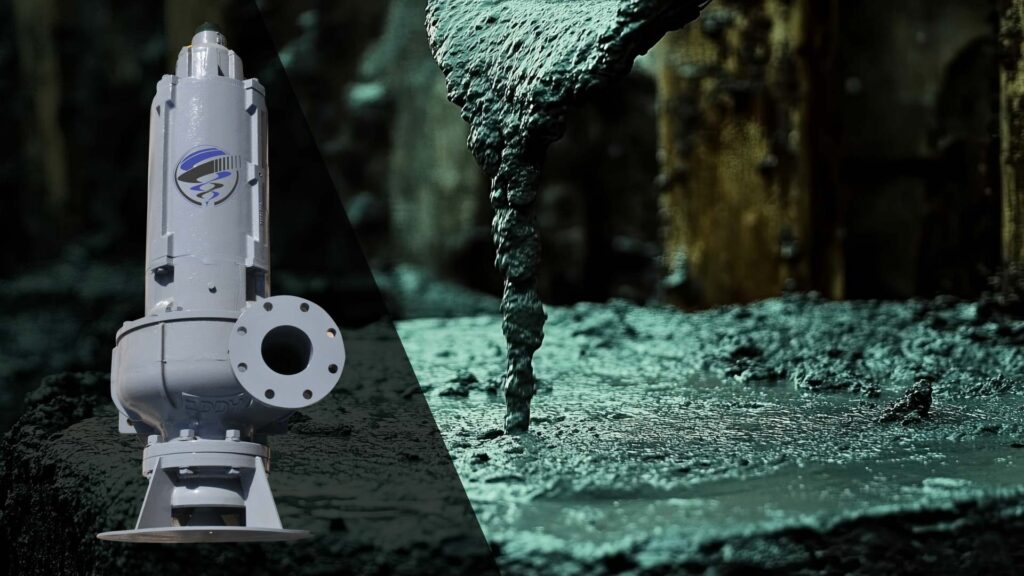
The impeller is one of the most critical components of an abrasive slurry pump, significantly impacting its performance, efficiency, and durability. Several design factors must be considered to optimize the impeller’s ability to handle abrasive materials and ensure that the pump operates efficiently over extended periods. These factors include material selection, design geometry, impeller size and shape, as well as the impact of rotational speed and flow rate.
Material Selection for Impellers
One of the primary factors affecting impeller performance in abrasive slurry pumps is the material used in its construction. Since slurry pumps are often used in environments with abrasive materials, the impeller must be made from wear-resistant materials to withstand the harsh operating conditions.
- High-Chromium Alloys: Many slurry pump manufacturers opt for high-chromium alloys due to their excellent wear resistance properties. These materials are highly effective at handling abrasive slurries with coarse particles, as they can resist both mechanical wear and corrosion. The high chromium content in the alloy increases hardness and enhances the impeller’s ability to withstand prolonged exposure to abrasive solids, thereby reducing maintenance needs and extending pump life.
- Rubber Linings: For applications involving moderate abrasiveness or where flexibility is crucial, rubber-lined impellers are often employed. The rubber provides a cushioned effect that absorbs impacts from abrasive particles, while still offering a durable surface that resists wear and tear. Rubber linings are also highly resistant to corrosion, making them ideal for certain chemical slurries or environments with corrosive components.
- Composite Materials: In some cases, composite materials are employed to combine the best properties of both metal and rubber. These materials offer improved resistance to wear, corrosion, and impact, making them ideal for highly abrasive applications.
Design Geometry: Radial vs. Axial Impeller Configurations
The design geometry of the impeller—whether radial or axial—plays a significant role in determining the performance of the abrasive slurry pump.
- Radial Impellers: Radial impellers are the most commonly used type in abrasive slurry pumps. The design pushes the slurry outward from the center of the impeller, creating a high-pressure flow at the pump’s discharge. This design is ideal for handling slurries with a wide range of particle sizes, as the centrifugal force generated helps in efficiently separating the solids from the liquid. Radial impellers are particularly effective in applications where high flow rates and moderate head pressures are needed.
- Axial Impellers: Axial impellers are designed to push the slurry in a direction parallel to the pump shaft. This configuration generates a lower pressure but can handle higher flow rates more efficiently. Axial impellers are better suited for low-pressure, high-flow applications where the slurry consists mainly of fine particles or liquids with a low solid content. While axial impellers are less effective at handling high slurry concentrations, they can provide more consistent flow in specific slurry pumping scenarios.
Impeller Size and Shape Considerations for Different Slurry Types
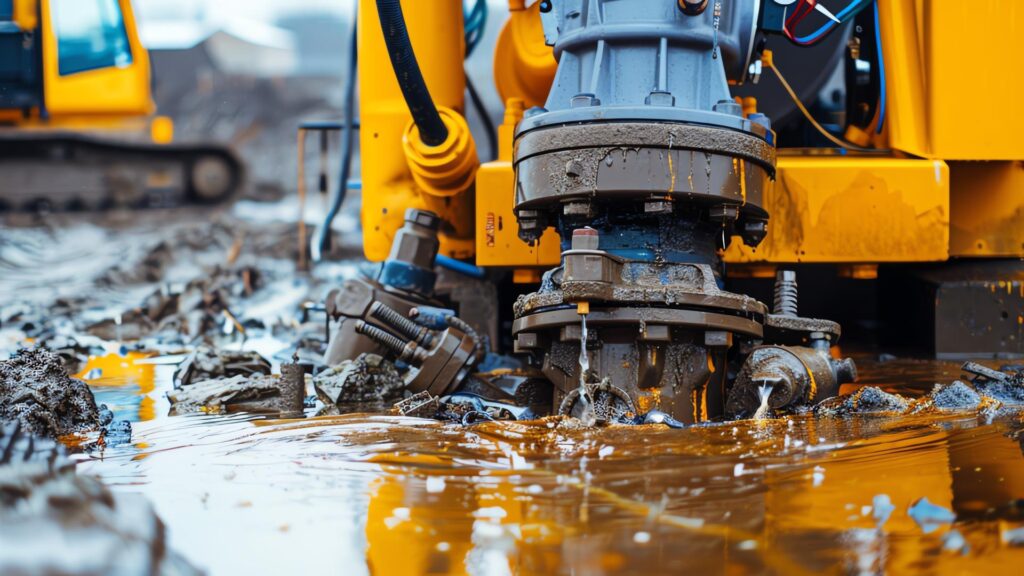
Impeller size and shape are also critical factors that impact the efficiency and lifespan of abrasive slurry pumps. The design must be tailored to suit the specific type of slurry being pumped, as the size and shape of the impeller affect the flow dynamics and the pump’s ability to handle the slurry’s abrasive characteristics.
- Slurry Particle Size: When dealing with coarse or large particles in abrasive slurries, larger impellers with wider, deeper vanes are typically preferred. These larger impellers can move more material without the risk of clogging or excessive wear. However, larger impellers also require more power and may result in lower rotational speeds. For finer slurries, smaller impellers with finer vanes are often used to achieve higher rotational speeds and increased pressure, thereby minimizing the risk of clogging.
- Slurry Concentration: The concentration of solids in the slurry will also affect impeller size. Higher concentrations of solids typically require impellers with a larger diameter and more robust designs to handle the increased resistance and wear. In contrast, lower solid content may allow for the use of smaller, more compact impellers that can achieve higher flow rates with lower energy consumption.
Impact of Rotational Speed and Flow Rate on Impeller Durability and Pump Performance
Rotational speed and flow rate are two interrelated factors that can significantly impact the durability of the impeller and the overall performance of the abrasive slurry pump.
- Rotational Speed: Higher rotational speeds can lead to increased shear forces on the slurry, resulting in higher energy consumption. While increasing speed can improve the pump’s flow rate, it also increases wear on the impeller. In applications involving abrasive slurries, excessive rotational speed can accelerate the wear of the impeller’s surface, particularly if the slurry contains large, hard particles. Therefore, slurry pump manufacturers often recommend optimizing speed settings to balance pump efficiency and impeller longevity.
- Flow Rate: The flow rate of the slurry directly impacts the impeller’s ability to handle the material efficiently. Higher flow rates require larger impellers to move the slurry effectively, but this can place additional stress on the impeller and other pump components. When the flow rate is too high, it can lead to cavitation and increased wear, while a lower flow rate may lead to underperformance and energy inefficiency. Properly matching the impeller size and design with the required flow rate ensures optimal performance and reduces unnecessary wear.
In conclusion, the design factors of impellers—such as material selection, geometry, size, and rotational speed—are essential in ensuring the efficient and long-lasting operation of abrasive slurry pumps. These considerations must be tailored to the specific type of slurry being pumped to achieve maximum performance and minimize wear.
Impeller Wear and Tear: Challenges in Abrasive Slurry Pumping
Impeller wear is one of the most significant challenges in abrasive slurry pumping. Given that abrasive slurries typically contain hard, coarse solids, the impeller is subject to high levels of friction and impact, which can lead to rapid degradation. Several factors contribute to the accelerated wear of impellers in abrasive slurry applications:
- Particle Size: Larger particles in the slurry are one of the primary causes of impeller wear. When these particles strike the impeller’s surface, they create abrasive forces that erode the material over time. The harder and larger the particles, the more severe the wear. Slurries containing jagged or sharp-edged particles, such as gravel or sand, can be particularly damaging to the impeller.
- Slurry Concentration: High concentrations of solids in the slurry exacerbate the wear process. As the amount of solid material increases, the abrasive particles have more contact with the impeller surface, leading to faster erosion. In high-density slurries, the impeller is subjected to greater stresses and impacts, reducing its lifespan.
- Temperature: The temperature of the slurry also affects impeller wear. Elevated temperatures can soften certain materials, making them more susceptible to erosion and corrosion. In some cases, higher temperatures can lead to thermal stress, causing cracks or warping in the impeller material, which further accelerates wear.
How the Abrasive Nature of Slurries Accelerates Impeller Degradation
The abrasive nature of slurries is a significant contributor to impeller degradation. Slurries, by definition, contain suspended solids that are often gritty or coarse in texture. When these solids come into contact with the impeller, they cause mechanical wear, which, over time, leads to erosion of the impeller surfaces.
- Impact and Friction: The particles in abrasive slurries create both friction and impact forces as they move through the pump. The constant rubbing and hitting of the impeller by these particles result in surface wear and gradual thinning of the impeller blades. This can reduce the impeller’s ability to generate the required pressure, resulting in decreased efficiency.
- Erosion: Erosion is another significant form of wear that occurs when abrasive particles scrape against the impeller’s surface. This process removes material from the impeller, particularly in areas where the slurry is concentrated or where turbulent flow occurs. As erosion continues, the impeller’s surface becomes rougher, further exacerbating wear and reducing the pump’s performance.
- Cavitation: Cavitation, caused by low-pressure zones in the slurry pump, can lead to further degradation of the impeller. Although cavitation is primarily linked to fluid dynamics, the combination of cavitation and abrasive particles can significantly accelerate the wear process, leading to faster impeller failure.

The Effect of Impeller Wear on Pump Efficiency and Downtime
As impellers degrade due to wear, their ability to efficiently pump abrasive slurries diminishes. The following impacts are commonly observed:
- Reduced Pump Efficiency: Worn impellers lose their ability to generate sufficient pressure and flow, leading to decreased pump performance. The pump may struggle to maintain the desired flow rate, requiring more energy to operate. This inefficiency can result in increased operational costs and higher energy consumption.
- Increased Downtime: Impeller wear frequently leads to pump failures, resulting in unplanned downtime. As the impeller wears out, it can cause vibrations, cavitation, or even complete pump failure. This downtime can be costly, particularly in industries where continuous slurry pumping is essential for operations, such as mining and dredging.
- Higher Maintenance Costs: The wear and tear on impellers can lead to frequent maintenance and replacement costs. Regular inspections, repairs, and the need for impeller replacements can strain budgets and resources, making it more challenging to maintain optimal operations.
How Slurry Pump Manufacturers Optimize Impeller Design for Durability
To combat the challenges of impeller wear in abrasive slurry applications, slurry pump manufacturers continually innovate in terms of materials, coatings, and design enhancements. These efforts focus on extending the lifespan of impellers and ensuring more efficient slurry pumping.
- Innovations in Impeller Technology and Materials:
Slurry pump manufacturers have made significant advancements in impeller materials, focusing on wear-resistant alloys and coatings. High-chromium alloys, for instance, are commonly used due to their superior hardness and resistance to abrasive wear. New composite materials that combine the best features of metal and rubber are also gaining popularity due to their ability to handle both abrasion and corrosion. Manufacturers are also exploring the use of advanced materials that offer superior performance in extreme environments, further extending the life of impellers in abrasive slurry applications.
- Techniques to Enhance Impeller Life:
- Coating Technologies: One of the most effective ways to enhance impeller durability is through the use of protective coatings. Hard-wearing coatings, such as carbide-based or ceramic coatings, provide an additional layer of protection that helps prevent erosion and abrasion. These coatings are applied to the impeller’s surface to improve its resistance to wear, corrosion, and chemical degradation.
- Heat Treatments: Heat treatment processes, such as quenching and tempering, are employed to improve the hardness and toughness of the impeller material. These treatments enhance the material’s resistance to abrasion, ensuring that the impeller can withstand the mechanical stresses caused by slurry pumping.
- Corrosion Resistance: Many abrasive slurries contain corrosive elements that can accelerate impeller degradation. To combat this, slurry pump manufacturers use materials that are resistant to corrosion, such as stainless steel or rubber linings. These materials ensure that the impeller can handle slurries containing chemicals, salts, or other corrosive components without losing performance.
- Coating Technologies: One of the most effective ways to enhance impeller durability is through the use of protective coatings. Hard-wearing coatings, such as carbide-based or ceramic coatings, provide an additional layer of protection that helps prevent erosion and abrasion. These coatings are applied to the impeller’s surface to improve its resistance to wear, corrosion, and chemical degradation.
- Importance of Customized Impeller Designs for Specific Slurry Pumping Applications:
Customized impeller designs are crucial for optimizing pump performance and durability in specific slurry pumping applications. Slurry pump manufacturers often work with customers to design impellers tailored to the unique characteristics of the slurry being pumped. Factors such as particle size, slurry concentration, temperature, and corrosive properties all influence the design of the impeller. Customization enables a better match between the impeller and the slurry’s requirements, thereby reducing wear and enhancing overall pump efficiency.
Ensuring Long-Lasting Efficiency in Abrasive Slurry Pumps
In abrasive slurry pumping applications, the impeller is a critical component that directly impacts both efficiency and durability. With the constant challenges of wear from abrasive particles, slurry pump manufacturers need to employ advanced materials, innovative designs, and custom solutions to extend impeller life and optimize performance. At Lone Star Dredge, we understand the complexities of slurry pumping and are committed to providing high-quality dredging equipment that withstands the toughest conditions. If you’re looking for reliable and durable abrasive slurry pumps for your project, please reach out to us today to discuss how we can support your needs with our expert solutions.

